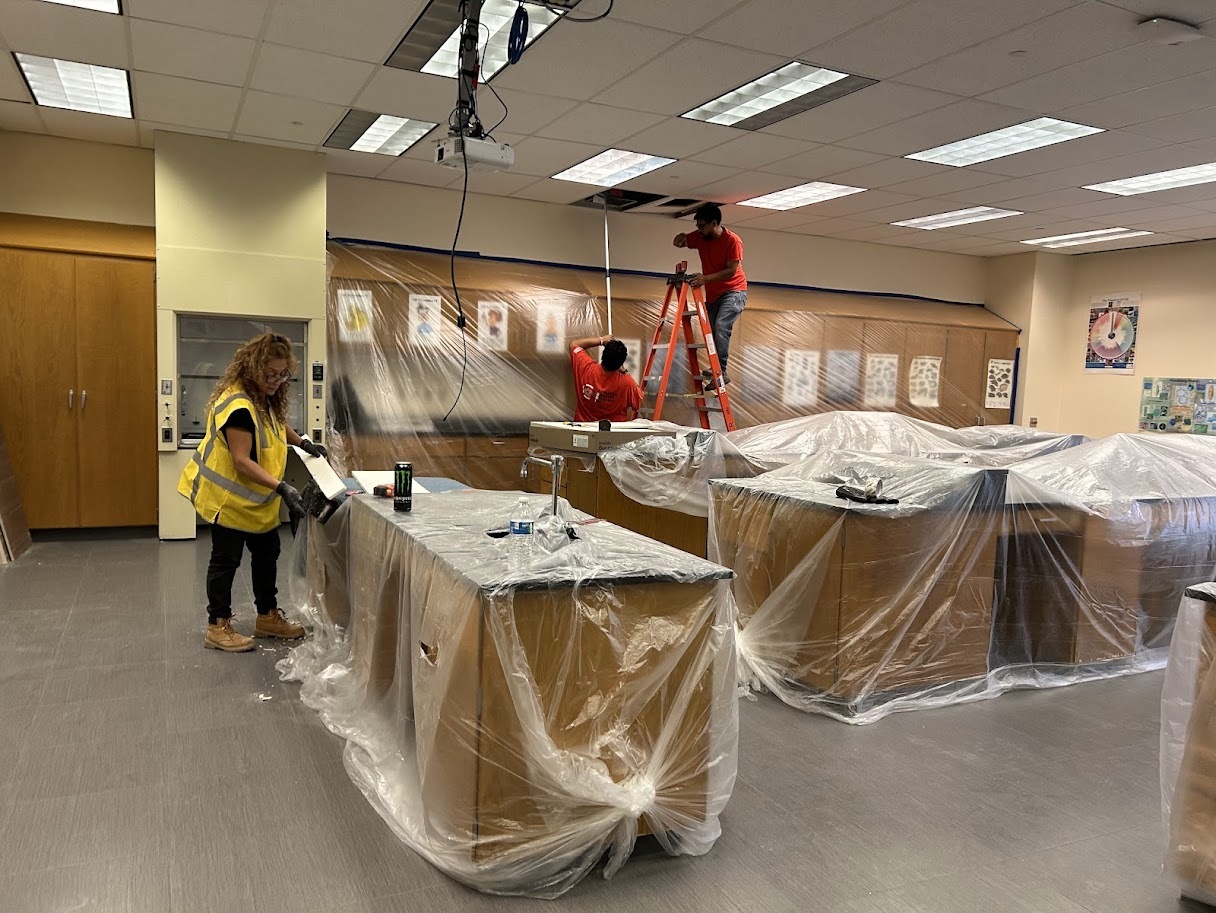Client
East Stroudsburg High School (Pennsylvania)
Situation / Problem
Just three weeks before the start of the new school year, the administration at East Stroudsburg High School discovered a significant mold problem in their school building. What was initially believed to be about 25 classrooms affected by mold turned out to be nearly 50 classrooms once further inspection was carried out. With teachers and students scheduled to return imminently, the school faced a crisis: many classrooms were unsafe or unfit for occupancy, threatening to delay the opening of school, disrupt learning schedules, and interfere with student and staff health and safety.
Challenges
Mold remediation in a school setting has special difficulties; among them:
- Time pressure: Schools have hard deadlines for opening. There is little flexibility for delays because students’ schedules, transportation, staffing, and curricula depend on timely readiness.
- Health/safety requirements: Children are particularly vulnerable to mold-related health risks (allergies, asthma exacerbation, respiratory issues). Remediation must meet strict safety standards, contain spores, and avoid cross‑contamination during work.
- Scope under‑estimation: Initial assessments are often incomplete; what looks like localized mold can spread through HVAC systems, ceilings, walls, behind paneling, etc., increasing the affected area significantly.
- Regulatory / environmental compliance: Proper disposal of mold‐infested materials, use of approved remediation methods, and following local building codes and health guidelines.
Advanced Disaster Recovery Inc.’s Solution & Implementation
- Rapid assessment
Within hours, Advanced DRI personnel performed thorough inspections of all suspected classrooms, HVAC and ductwork, ceiling tiles, insulation, wall cavities, etc., to determine the full scope of mold infestation—confirming that ~50 classrooms required remediation. - Mobilizing resources
Advanced DRI deployed multiple crews, including specialized mold remediation technicians, equipment, and disposal logistics. Given the tight timeframe, working in shifts and coordinating with school facilities staff was essential. - Containment and abatement
Each classroom was sealed off, moldy materials removed, surfaces cleaned and disinfected, HVAC components cleaned to avoid spread through ventilation, moisture source addressed. - Drying, repairs, and finishing
After cleaning, spaces were dried thoroughly. Damaged materials replaced. Final finishing was done so the rooms were restored to safe, usable condition. - Quality assurance & testing
Checks for remaining moisture were conducted to ensure that remediation was successful and rooms met safety standards.
Outcome
- Timeline met: The remediation, repair, and finishing of all 50 classrooms were completed in approximately 2½ weeks, allowing classes to begin on time.
- Full restoration: All remediated rooms passed safety and quality checks, with no lingering mold or moisture issues reported as school opened.
- Health & safety preserved: Students and staff returned to a safe learning environment without delay.
- Scheduling preserved: The school avoided postponing the start of school and maintained its planned academic schedule.
Lessons Learned / Best Practices
- Early, thorough assessment is critical. What surfaces are visible often underestimates the full spread of mold.
- Having trusted remediation partners who can mobilize rapidly is essential in educational settings.




